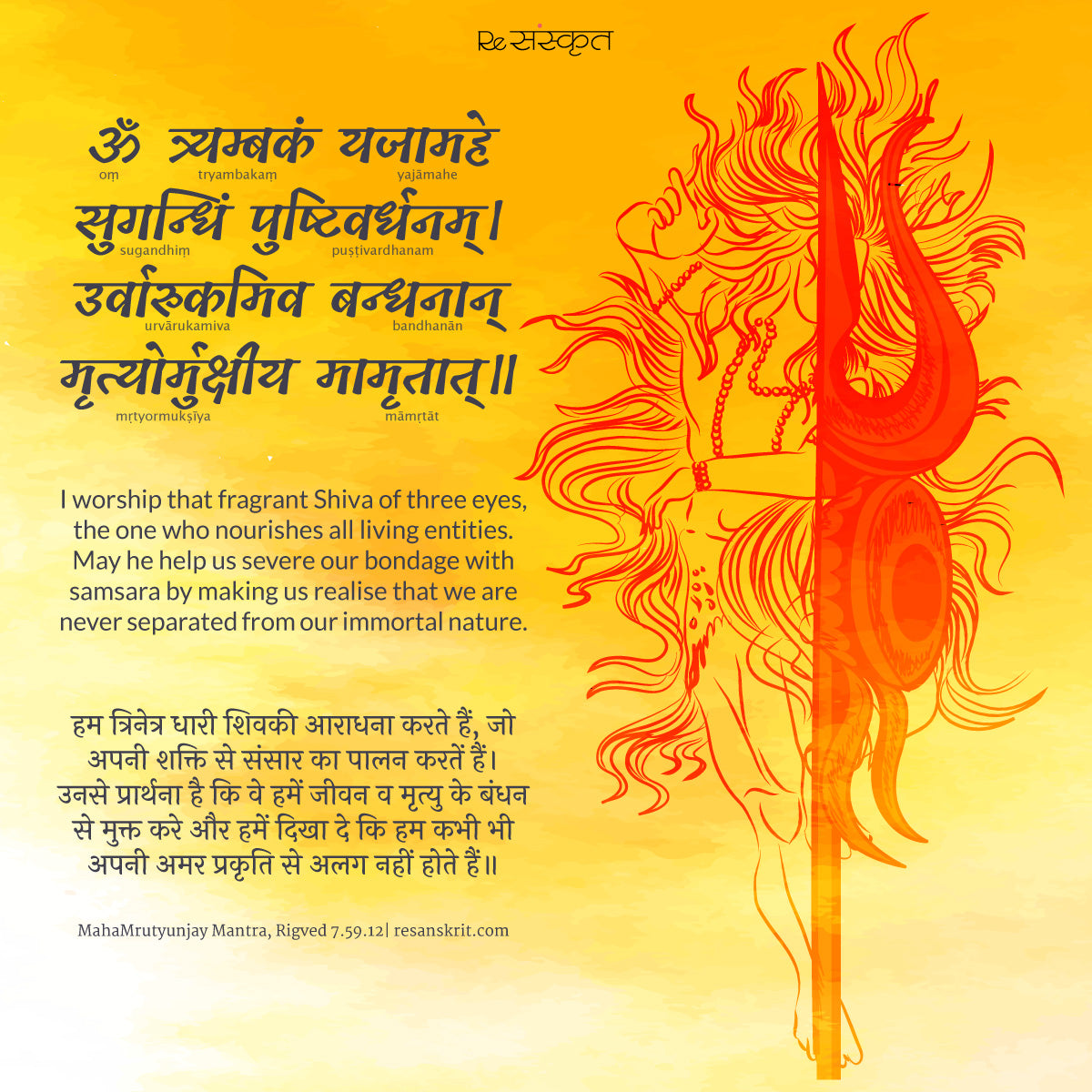

When we sing the national anthem alone in our room vs singing in a cricket stadium on the final match between India & Pakistan is a totally different energy field. Vibration from the environment – Environment around us also affects the efficacy of the mantra. In the same way, the other option every individual has is to have faith in a guru who becomes a benefactor and guide-post to progressing in the spiritual path. In the same way, one can chant the most powerful of the mantras but if the inherent vibration of the individual in terms of his conviction and focus is limited, the efficacy of the mantra will be equivalently reduced.Įven if one doesn’t know driving, the vehicle can still be driven if you were to hire a driver.
MAHA MRITYUNJAYA MANTRA GUJARATI HOW TO
Vibrations from the individual – One can have the best of the cars but if one doesn’t know how to drive it, it is meaningless. While some mantras focus on praising a particular deity, some focus on metaphysical principles, and yet some others such as the Maha Mrityunjaya Mantra focus on enabling the Sadhak in fulfilling specific desires. Inherent strength – Inherent strength has its roots in its words, meaning, intonations, insights, and interpretations. The strength of each mantra is a derivative of 3 aspects:

These truths will continue to exist with or without humans or life itself in the exact same way as gravity will continue to exist with or without life. Mantras are nothing but eternal truths which were discovered by Rishis or Sages who contemplated on specific aspects of life and living. – Another narration relates to the part of Rigveda where a portion is said to have been composed by Maharishi Vashishtha and hence attributed to him Lord Shiva is said to have revealed this mantra to him

– Another story is in relation to Shukracharya, the spiritual master of the demons. As a child, he was advised to pray to Lord Shiva to prevent his premature death and during the course of worship, Lord Shiva revealed this mantra to him – The most common one is connected to Rishi Markandeya. There are 3 interesting stories in connection with the origin of the Maha Mrityunjaya mantra. Keeping the hypothesis of divine intervention/communication aside, this could be possible in the exact same way gravity or any other laws of physics were understood intuitively first before bringing them to the common man through guided logic. This is why Vedas are also called “श्रुति” ( śruti), meaning “ that which is heard.” They are said to have been transmitted as energy/vibration through contemplation and further transmitted to other humans purely via hearing. Vedic Hymns are often referred to as “अपौरुषय” ( apauruṣaya), meaning – ‘ un-authored by a human’.

Scores of articles and deliberations have been done ruminating over each word of this Mantra, but in this article, we shall aim to simplify some of the core concepts and help get a sharper perspective on “who”, “what”, “why”, “how” and “when” of this Mantra. Maha Mrityunjaya Mantra, by definition, protects us from our deepest fear – Fear of death. These mantras have been powerful tools for human beings in overcoming fear. Fear may be divided into 3 core categories –įear of losing things/ people dear to us andĪll efforts of man are towards conquering fear. From their core intent point of view, all these hymns are aimed at addressing the most basic/carnal weak-link that drives our thoughts, words, and deeds either directly or indirectly – Fear.įrom the day we are born, whatever we do is fundamentally a derivative of fear. There is 1 common thread in these 5 mantras which is possibly the reason why people have caught on to them in greater frenzy than others.


 0 kommentar(er)
0 kommentar(er)
